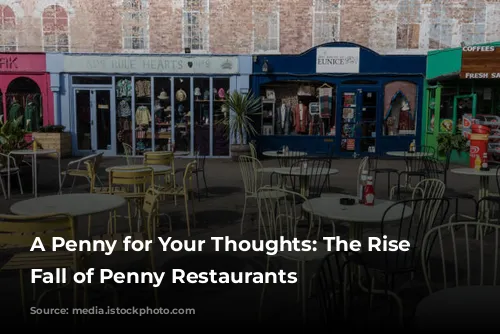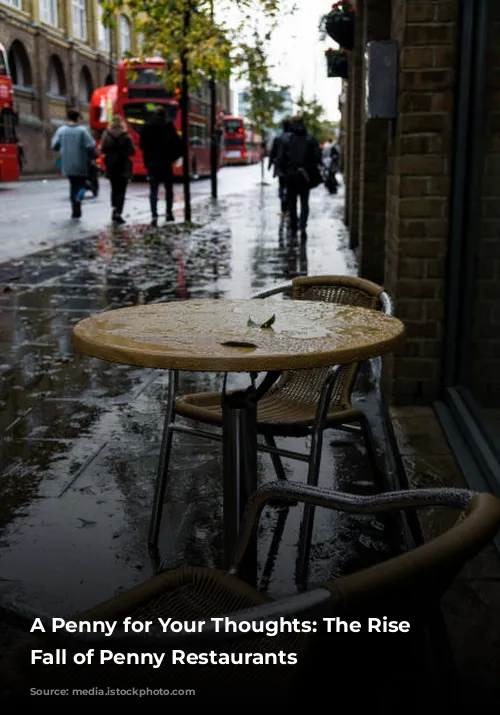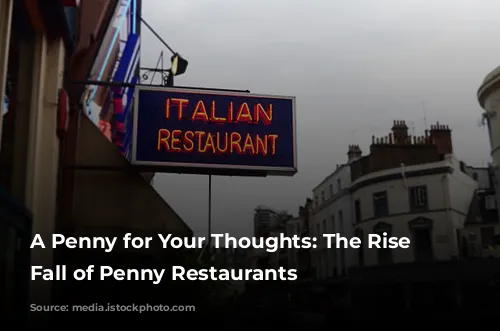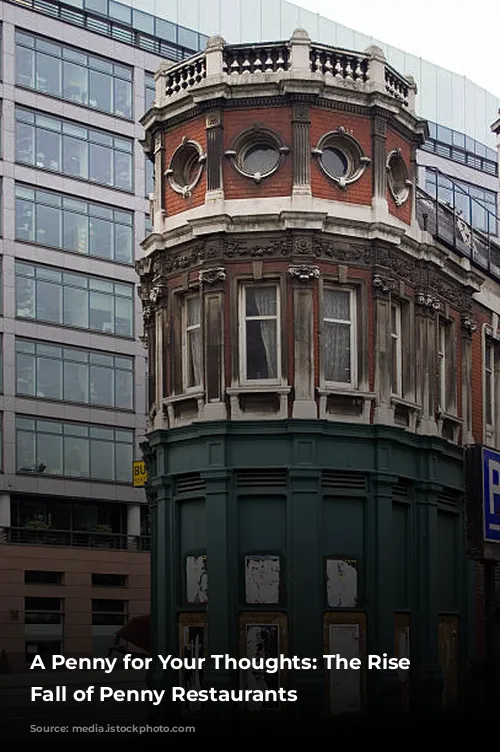Imagine a world where you could enjoy a hearty meal for a mere penny. Sounds too good to be true, right? But during the Great Depression, this was the reality for millions of Americans thanks to the rise of penny restaurants.
These humble eateries served up simple, affordable meals to the masses, offering a dignified alternative to the grim breadlines that stretched for blocks. Today, we explore the fascinating story of these establishments, from their humble beginnings to their eventual decline, and the legacy they left behind.
A Slice of History: The Humble Beginnings
107 West 44th Street in New York City was once home to Bill Duffy’s Olde English Tavern, a place for revelry and indulgence. But when the Great Depression hit, even upscale establishments couldn’t withstand the financial storm. The tavern closed its doors, replaced by a new eatery catering to a different clientele: the Penny Restaurant.
This new establishment was a far cry from its predecessor. Gone were the lavish dishes and boisterous crowds. In their place, humble offerings like pea soup and whole-wheat bread filled the menu, priced at a mere penny a piece. The Penny Restaurant was a beacon of hope for the downtrodden, providing sustenance and a sense of dignity in a time of immense hardship.
The concept of the penny restaurant wasn’t entirely new. These charitable ventures had existed in cities across America in the late 19th century, often providing meals to teenagers struggling to make ends meet. T.M. Finney, manager of a St. Louis penny restaurant run by the Provident Association, summed up the ethos of these establishments perfectly: “The aim of the scheme is to afford poor people to maintain their self-respect and reduce the number of beggars.”
A Time of Need: Penny Restaurants in the Depression
The Great Depression marked a turning point for penny restaurants, propelling them into the spotlight. With unemployment skyrocketing to 25 percent nationwide, millions of Americans were grappling with hunger and despair. Breadlines, filled with desperate souls waiting hours for a meager handout, became a tragic symbol of the times. Penny restaurants emerged as a dignified alternative, providing nourishment and a sense of normalcy in a world turned upside down.
These restaurants offered simple, often meatless meals, reflecting the harsh realities of the era. One could enjoy a satisfying meal of bread, soup, potatoes, beans, and coffee for just five cents – a small price to pay for a full stomach and a glimmer of hope.
The Eccentric MacFadden and the Rise of Clifton’s
One of the most prominent figures in the penny restaurant movement was Bernarr MacFadden, a renowned fitness enthusiast and publishing magnate. Known for his muscular physique and radical dietary beliefs, MacFadden opened several penny restaurants at the turn of the century, and he revived his charitable efforts during the Depression.
MacFadden’s New York restaurant on West 44th Street boasted four floors, each offering a different dining experience. From fine dining to simple, affordable meals, his establishment catered to a diverse clientele. Even Anna Roosevelt, daughter of President Franklin Delano Roosevelt, was known to dine at one of his establishments.
While MacFadden’s penny restaurants were impressive, Clifton’s Cafeteria in Los Angeles became a true icon of the era. Started during the Depression, Clifton’s was part of an 11-restaurant chain founded by Clifford Clinton, a scion of a successful restaurant family with a deep commitment to charity.
Clinton’s cafeterias were massive, wildly decorated spaces that aimed to attract the masses. But his vision went beyond profit. He wanted to provide a dignified and welcoming space for those struggling financially. His “Dine free unless delighted” policy exemplified his compassionate approach, reflecting a belief that everyone deserves a decent meal, regardless of their circumstances.
A Legacy of Dignity and Compassion
The Clifton’s cafeterias became a haven for those struggling to make ends meet, offering a sense of community and a reminder that even in the darkest of times, there was still hope and kindness to be found. Clinton’s unwavering commitment to feeding the hungry, even at a loss, earned him both admiration and criticism. Some accused him of encouraging laziness and dependency, but Clinton staunchly defended his actions, arguing that everyone deserves a chance to survive and thrive.
Clifton’s Cafeteria thrived throughout the Depression and beyond, becoming a cherished landmark in Los Angeles. The original Brookdale location, with its rustic woodland decor, became a beloved destination for rich and poor alike, a testament to the power of compassion and community.
The End of an Era and a Lasting Legacy
As the Depression eased and the post-war American economy boomed, many penny restaurants began to fade away. Their purpose, to provide sustenance and dignity to the hungry, was no longer as pressing. However, Clifton’s continued to flourish, becoming a symbol of a bygone era. Today, the Brookdale location remains open, a testament to the legacy of compassion and generosity that defined the penny restaurant movement.
While the penny restaurants of the Depression may be gone, their story serves as a powerful reminder of the importance of human compassion, the dignity of a good meal, and the enduring power of community. Their legacy lives on in the hearts of those who remember their generosity and the lasting impact they had on a nation in need.









